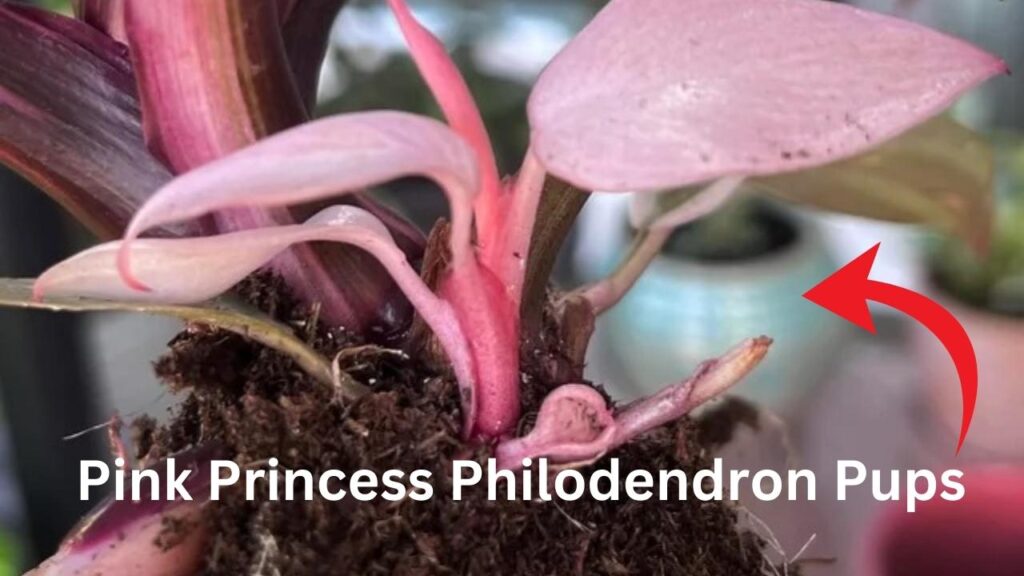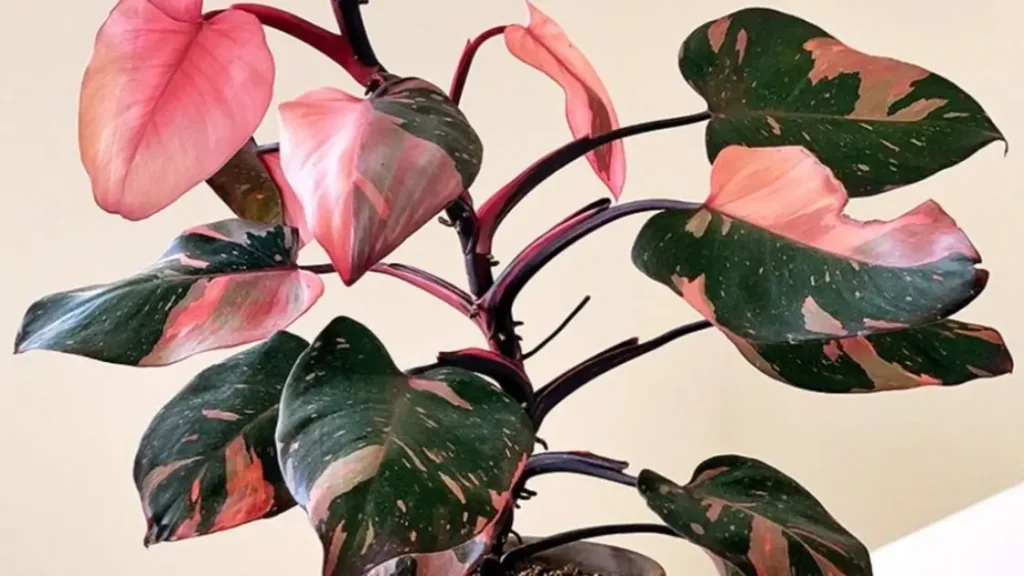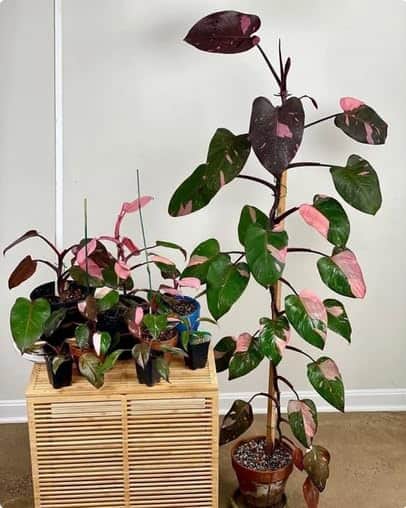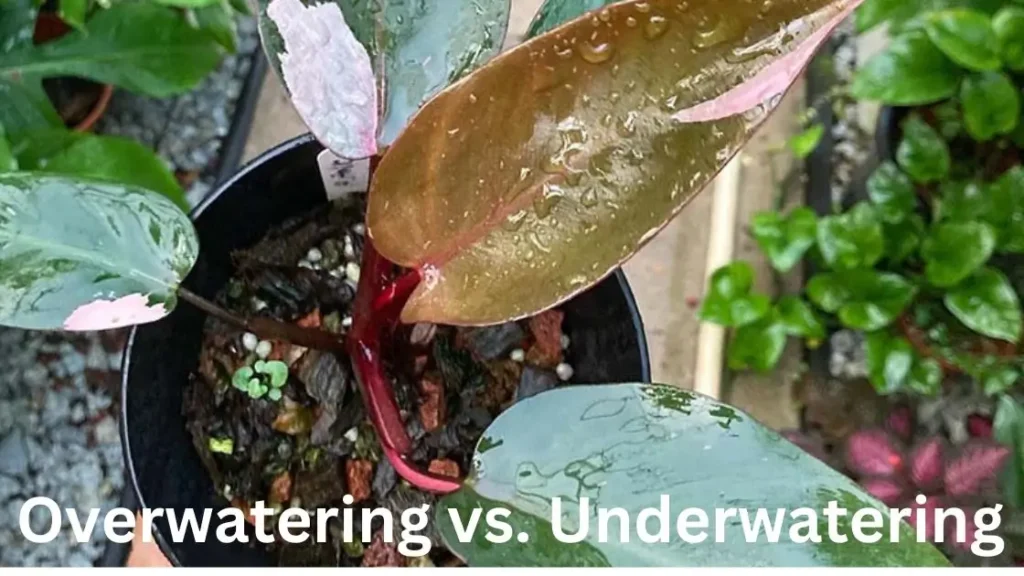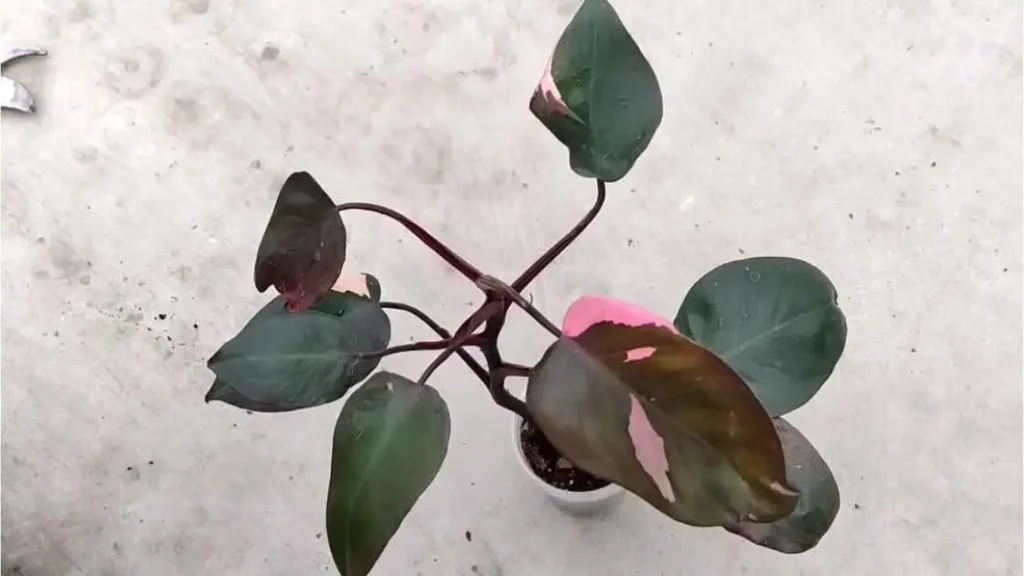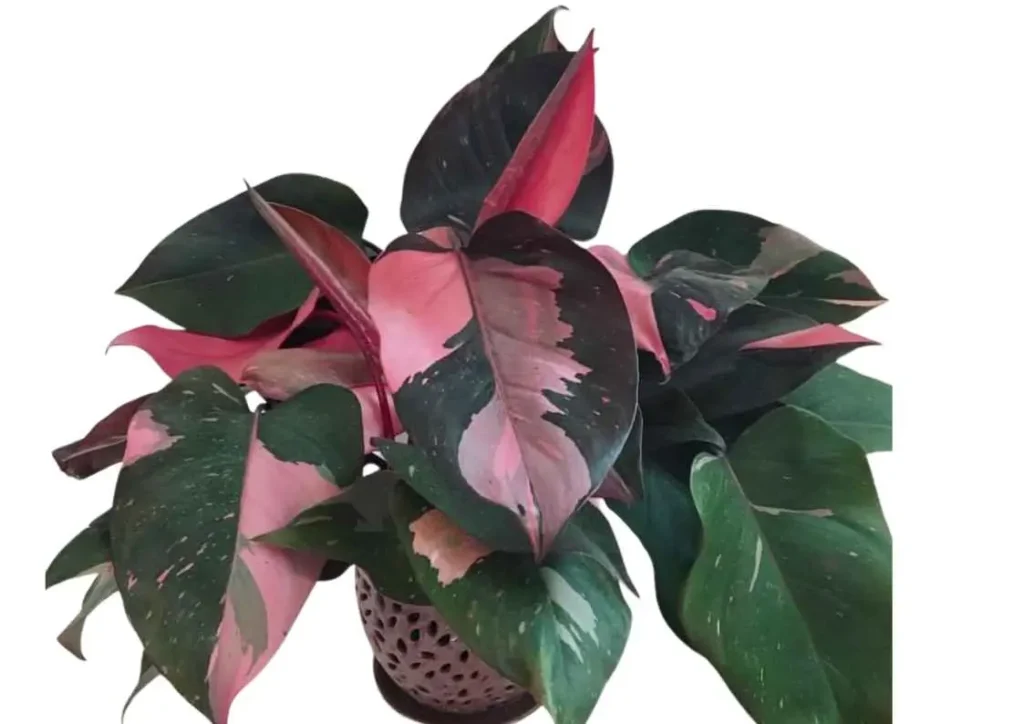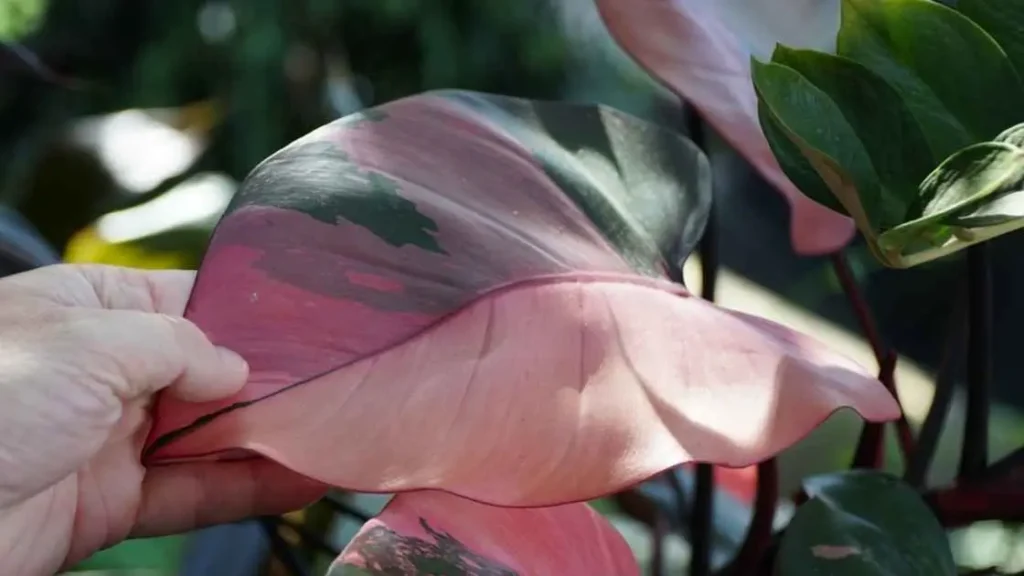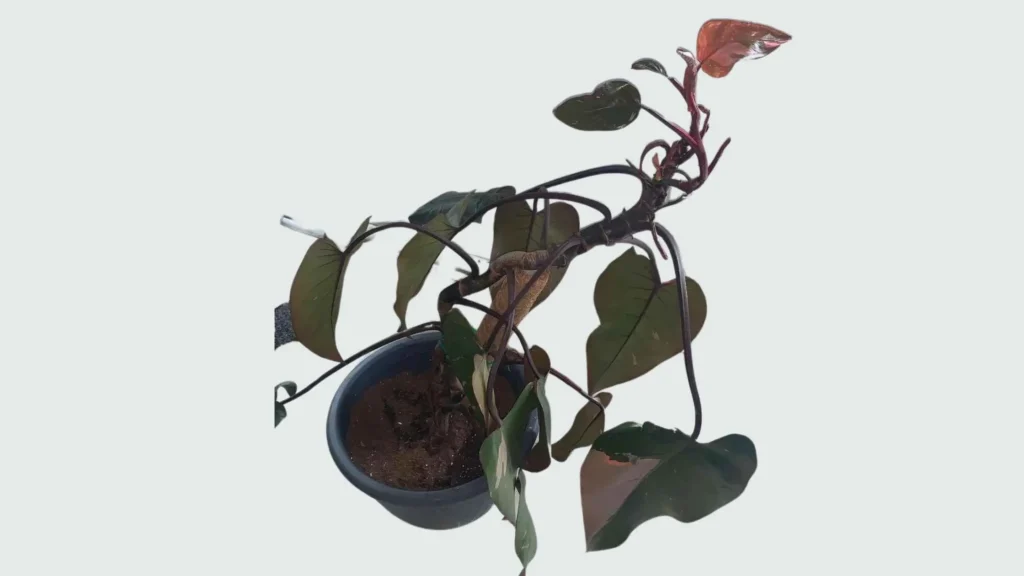Table of Contents
ToggleI’ve always been a huge fan of houseplants, and the Pink Princess Philodendron is one of my favorites. Its striking variegated leaves with splashes of pink make it a showstopper in any collection. However, not too long ago, I noticed something troubling, my Pink Princess leaves started curling. This sent me down a path of discovery to figure out what was going wrong and how to fix it. If you’re facing a similar issue, let’s explore the reasons why your Pink Princess Philodendron leaves might be curling and how you can address these problems.
Common Causes of Pink Princess Leaves Curling
When I first noticed my Pink Princess leaves curling, I knew I had to dig into the possible causes. Leaf curling in Pink Princess Philodendrons can be attributed to several factors, and understanding these is the first step towards a healthy plant. Proper Pink Princess Philodendron care involves ensuring optimal light, water, humidity, temperature, and pest management.
Insufficient Light
One of the first things I checked when my Pink Princess leaves started curling was the light situation. These plants love bright, indirect light. Insufficient light can be a primary cause of leaf curling. In their natural habitat, Pink Princess Philodendrons grow under the canopy of larger trees, getting filtered sunlight. Too little light means the plant isn’t photosynthesizing enough, which can cause the leaves to curl as a way to reduce surface area and conserve energy.
To rectify this, I moved my plant closer to a window that receives plenty of indirect sunlight. You can also use artificial grow lights if natural light is limited. Just be cautious not to place the plant in direct sunlight for extended periods, as this can cause the leaves to burn and curl as well.
Remember, balancing light conditions is crucial for the health of your Pink Princess Philodendron. Too much or too little can lead to problems, including curling leaves.
Overwatering
Overwatering is a common mistake that many plant owners, including myself, make. When I noticed the leaves of my Pink Princess curling, I suspected overwatering could be the culprit. These plants don’t like to sit in waterlogged soil. Overwatering can suffocate the roots, preventing them from getting the oxygen they need, leading to root rot and stressed plants. This stress often manifests as curling leaves.
To fix this, I adjusted my watering schedule. It’s crucial to let the top inch or two of the soil dry out before watering again. I also ensured that my pot had adequate drainage holes to allow excess water to escape. Using well-draining soil specifically formulated for tropical plants can also help prevent water retention.
By paying closer attention to the watering needs of my Pink Princess Philodendron, I was able to reduce leaf curling and promote healthier growth.
Underwatering
On the other end of the spectrum, underwatering can also cause the leaves of your Pink Princess Philodendron to curl. When my plant’s leaves started curling, I realized that I might have been too cautious with watering. These plants need consistent moisture, and when they don’t get enough water, the leaves can curl as a defense mechanism to minimize water loss through transpiration.
To address this, I made it a habit to regularly check the soil moisture. I found that inserting my finger about an inch deep into the soil was an effective way to gauge whether it was time to water. If the soil felt dry, I knew it was time to water my plant. However, I was careful not to let the soil become too dry between waterings, as this can also stress the plant.
Ensuring a consistent watering schedule helped me keep my Pink Princess Philodendron leaves healthy and uncurling.
Low Humidity
Living in a region with low humidity, I quickly learned how crucial humidity levels are for my Pink Princess Philodendron. These plants thrive in high humidity environments, mimicking their tropical origins. When exposed to low humidity, the leaves can curl as an adaptive response to reduce water loss.
To increase the humidity around my plant, I used a few effective techniques. Placing a humidifier nearby was a game-changer. It helped maintain a consistent humidity level, especially during the dry winter months. Additionally, I grouped my houseplants together, which created a microclimate of higher humidity. Another trick was using a pebble tray filled with water; as the water evaporated, it increased the humidity around the plant.
By increasing the humidity levels, I noticed a significant improvement in the health of my Pink Princess Philodendron, and the curling of the leaves reduced considerably.
Temperature Extremes
Temperature plays a vital role in the well-being of Pink Princess Philodendrons. These plants prefer temperatures between 65-85°F (18-29°C). Exposure to extreme temperatures, whether too hot or too cold, can stress the plant, causing the leaves to curl.
I once made the mistake of placing my Pink Princess near a drafty window during winter. The cold air caused the leaves to curl up in response to the stress. To avoid this, I now ensure my plant is kept in a stable environment with no sudden temperature fluctuations. I avoid placing it near air conditioning vents, heaters, or drafty windows.
If you need to move your plant outdoors during warmer months, be cautious of temperature changes. Bring it back indoors before the temperature drops too low at night. Keeping your Pink Princess in a consistent, moderate temperature range will help prevent leaf curling due to temperature stress.
Pests and Diseases
Pests and diseases are sneaky culprits that can cause your Pink Princess Philodendron leaves to curl. I learned this the hard way when I noticed tiny, unwanted guests on my plant. Common pests like spider mites, aphids, and mealybugs feed on the plant’s sap, weakening it and leading to curled leaves.
Regular inspection of your plant is crucial. I make it a habit to check under the leaves and along the stems for any signs of pests. If I spot any, I use a gentle, organic insecticidal soap to treat the plant. For a more persistent infestation, a systemic insecticide might be necessary.
Diseases can also cause leaf curling. Fungal infections, often resulting from overwatering and poor air circulation, can be particularly troublesome. Ensuring good air circulation around your plant and avoiding overhead watering can help prevent these issues.
Keeping your plant healthy through proper care makes it more resistant to pests and diseases. Regular monitoring and prompt treatment of any issues are key to maintaining the health of your Pink Princess Philodendron.
Soil and Fertilizer Issues
The right soil and balanced fertilization are essential for the health of your Pink Princess Philodendron. Improper soil conditions and over-fertilization can lead to root stress and curling leaves.
When I first repotted my Pink Princess, I used a standard potting mix. However, I soon realized that it wasn’t draining well enough. These plants prefer a well-draining soil mix, often one that’s formulated for tropical plants or aroids. To improve drainage, I now use a mix that includes perlite or orchid bark.
Fertilization is another aspect that requires balance. Over-fertilizing can cause salt buildup in the soil, leading to root burn and curling leaves. I fertilize my Pink Princess during the growing season, using a balanced, water-soluble fertilizer at half strength. I avoid fertilizing during the winter months when the plant’s growth slows down.
By using the right soil mix and a careful fertilization schedule, I’ve seen a significant improvement in the overall health of my Pink Princess Philodendron. The leaves are vibrant and less prone to curling.
Preventative Care Tips
Taking preventive measures has been the best strategy for keeping my Pink Princess Philodendron healthy and preventing leaf curling. Here are a few tips that have worked for me:
- Regular Monitoring: I regularly check my plant for any signs of stress, pests, or diseases. Early detection allows me to address issues before they become severe.
- Consistent Care Routine: Maintaining a consistent watering schedule, ensuring the right light conditions, and keeping humidity levels high have all contributed to a healthier plant.
- Proper Placement: I place my plant in a spot where it gets bright, indirect light and is away from drafts and direct sunlight.
- Balanced Fertilization: I use a balanced fertilizer during the growing season, avoiding over-fertilization.
- Humidity Maintenance: Using a humidifier and grouping plants together helps maintain the high humidity levels my Pink Princess needs.
By following these preventative care tips, I’ve managed to keep my Pink Princess Philodendron in top shape, with minimal issues of leaf curling.
Dealing with curling leaves on my Pink Princess Philodendron was a learning experience. Through trial and error, I discovered that light, watering, humidity, temperature, pests, and proper soil are all critical factors in maintaining the health of this beautiful plant. By paying attention to these aspects and adjusting my care routine, I was able to restore my plant’s health and enjoy its stunning foliage once again. If you’re facing similar issues, I hope these tips help you keep your Pink Princess Philodendron thriving and free from curling leaves.
FAQ Section
Why are my Pink Princess Philodendron leaves curling?
There are several reasons why your Pink Princess Philodendron leaves might be curling, including insufficient light, improper watering (overwatering or underwatering), low humidity, temperature extremes, pests, diseases, and soil or fertilizer issues.
How can I tell if my Pink Princess Philodendron needs more light?
If your Pink Princess Philodendron leaves are curling and the plant appears leggy with long spaces between leaves, it might be a sign that it needs more light. Move it to a spot with bright, indirect light or use a grow light.
How often should I water my Pink Princess Philodendron?
Water your Pink Princess Philodendron when the top inch or two of soil feels dry to the touch. Be cautious of overwatering; ensure the pot has good drainage to prevent water from sitting at the bottom.
Can I fertilize my Pink Princess Philodendron in winter?
It’s best to avoid fertilizing your Pink Princess Philodendron during the winter months when the plant’s growth slows down. Resume fertilizing in the spring and summer with a balanced, water-soluble fertilizer at half strength.
What humidity level is best for my Pink Princess Philodendron?
Pink Princess Philodendrons thrive in high humidity, ideally around 60-70%. You can use a humidifier, place a pebble tray with water under the plant, or group it with other plants to maintain higher humidity levels.
Related
Discover more from Pink Philodendron
Subscribe to get the latest posts sent to your email.


